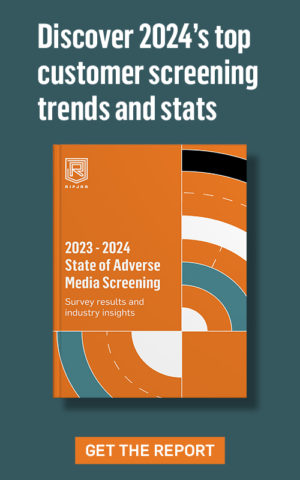The promise of adverse media screening has long been a holy grail for compliance and financial crime professionals. The wealth of data published every day in the news gives sophisticated companies a leading edge to protect themselves from reputational and criminal risk; from allegations of corruption and bribery, detailed accounts of embezzlement and environmental damage, to the trials and sentencing of organised criminal gangs for crimes including human trafficking and cybercrime.
With the wealth of potential risks out there, media searches may even provide the most valuable data source available during on-boarding or throughout the client lifecycle to spot risk or the leading indicators of criminal behaviour.
The challenges of exploiting the vast treasure trove of data are abundant. Every day, over 2 million articles are published in hundreds of different global languages. In the time between periodic review, this means potentially hundreds of millions of articles have to be searched for relevance or materiality.
Next, trying to search a client’s name, nicknames, aliases or its corporate identity in many different forms, many different abbreviations, contractions or permutations becomes an effort all in itself and fraught with inconsistencies between analysts.
Lastly, the vast amount of noise from non-related news articles about pop-culture, politics, advertising, horoscopes and other topics, all contribute to the fact that most adverse media searches either return nothing, or nothing but false positives.
Most adverse media searches either return nothing, or nothing but false positives.
Further adding to the complexity is the need to do this screening at scale. Searching tens of thousands or even millions of client identities every single day.
Simply, adverse media searching doesn’t work.
For the last 3 years, we have been working with leading European financial institutions to solve the problem. We want to fulfill the promise that adverse media can provide in completing the 360-degree view of client risk from all available data sources – both internal and external.
We have taken decades of combined experience working in the data intelligence industry and engineered a solution fit for the modern challenge of risk management from high-volume, high-noise data sources.
Using our own proprietary artificial intelligence techniques, we have taught machines to read the news like a human – at scale.
Our Labyrinth Screening platform takes the millions of articles of news published every single day in over a dozen languages – including Arabic, Russian, Spanish, French, Chinese, Japanese and Malay – and distills them down into thematic areas representing material criminal and reputational risk.
Entity extraction and entity resolution automatically join the dots on client names, automatically generating permutations and connections that a human analyst may miss. Machine translation completes the task, giving analysts a chance to see beyond the algorithmic selections that one might get from simply searching a traditional search engine for a client name or identity.
Automation like this scales. It can search all data sources continuously, and alert for new risks in real-time
Automation like this scales. It can search all data sources continuously, and alert for new risks in real-time. This means coverage of every single client, every single day. Small compliance teams can manage large volumes of client risks systematically and the promise of adverse media as a key part of the risk management cycle is fulfilled.
I’d love the opportunity to show this to you, so please get in touch if you’d like to hear more.
Thanks,
Jeremy Annis,
CEO/CTO, Ripjar
www.ripjar.com









